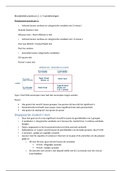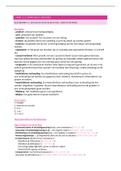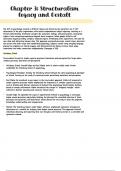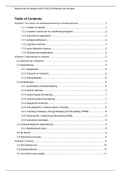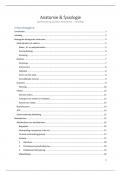Examples
Advertisement Metakids
First response is shocking and fearful.
Quite strong emotional appeal, they look
you straight into the eyes. Do you think
that such an appeal will be effective? Do
you think people will go to the website
and donate money? For young mothers,
it is very confronting. It is a sensitive
topic.
Advertisement organ donor foundation
Becoming a donor is probably your only
chance to get inside her. They used
humor in their advertisement , but it is a
very serious topic.
Why resistance and persuasion?
Resistance and avoiding
• Ad blocking tools on Internet who automatically blocks video ads, banner ads, Flash ads, Facebook ads,
and text ads.
• Stickers on your mailbox that you don’t want to receive printed advertisements.
• Don’t call me database that you don’t want to be called by telemarketers.
Why resistance and persuasion?
• Resistance is the most important element in the persuasion process.
• To understand and be successful at persuasion, you need to understand resistance.
What is resistance to persuasion?
One of the most used resistance strategies are counter-arguing, ignoring, doesn’t apply to me and
avoiding.
• A reaction against change: I don’t like it, I don’t believe it, I won’t do it.
• The ability to withstand a persuasive attack.
• Resistance as an outcome, not being moved by pressures to change.
• Resistance as a motivational state (within a person). The motivation to oppose and counter pressure to
change.
It is a reaction against change: “I don’t like it”, “I don’t believe it”, “I won’t do it.” It is the ability
to withstand a persuasive attack. It is also an outcome, namely not being moved by pressures
to change. Lastly, it is a motivational state (within a person): the motivation to oppose and
counter pressures to change.
, Course Themes
Sender strategies to
overcome resistance
Underlying
psychological Receivers’ resistance
processes of strategies
resistance to
persuasion
Helping receivers to
resist persuasion
Underlying psychological processes of resistance to persuasion
• Seminar 2: Self-control
• Seminar 3: Persuasion knowledge and advertising literacy
• Seminar 4: Psychological reactance and politeness theory
Receivers’ resistance strategies
• Seminar 5: Receiver’s resistance strategies 1
• Seminar 6: Receiver’s resistance strategies 2
Sender strategies to overcome resistance
• Seminar 6: Alpha and omega strategies for change (1)
• Seminar 9: Narrative persuasion and self-persuasion (2)
• Seminar 10: Sexual appeals and humor (3)
Helping receivers to resist persuasion
• Seminar 11: Disclosing persuasive intent (product placement, celebrities, sponsored influencer posts)
Final Exam
Type of questions final exam
• What resistance strategy is used in situation X?
• What persistence strategy is used in situation Y?
• Explain resistance in situation X based on theory Y?
• Predict campaign success based on theory X?
• How to improve campaign X based on theory Y?
• What strategy would you use to persuade in situation X?
• How would theory X explain situation Y?
• What advice would you provide in situation X based on theory Y/ findings from research Z?
, Seminar 2: Self-control Resistance and Persuasion
‘Chugging’
Chugging
Mix of the words charitable and mugging. Fundraisers who rob off your money, but for a charitable cause.
Overall, it is hard to say ‘no’ to fundraisers at the street when they talk about a sad story about poor kids in
Africa. When you are in a conversation with those people, it is hard to refuse the request. You have
fundraisers, but also sales representatives.
The action of approaching passengers in the street to ask for subscriptions or donations to a particular
charity.
Fennis, Janssen, & Vohs (2009)
Acts of benevolence: A limited-resource account of compliance with charitable requests.
Introduction
Impaired/weakened self-control fosters compliance with charitable request. Consumers are approached
by a fundraiser who asks for a contribution to a charitable cause. Embed the target request in a scripted
social influence technique (this tactic is especially designed to increase the odds of yielding to a
charitable request).
Preliminary stage of a scripted influence tactic is so effective, that is induces a state of self-regulatory
resource depletion among consumers. This weakened volitional state enhances compliance with a
request, but only when it contains certain heuristics aimed at promoting compliance.
Type of motivations related to endorsing a charity:
• Individual differences in altruism and volunteering orientation.
• Role of incentives used to promote charitable contributions.
Research question
What makes consumers sign a petition, volunteer to invest time and effort supporting a cause of a
nonprofit organization that may never heard before?
Aim
Aim of the study
Examine the internal process that takes place when consumers are approached by fundraisers (social
marketers) who ask for a contribution to a charitable cause. Tests how and why social influence techniques
promote charitable behavior.
These fundraisers (social marketers) use a scripted social influence technique, designed to increase the
odds of saying yes to a charitable request. Social influence techniques trigger one underlying process,
namely, self-regulatory resource depletion.
Elicitors of social-regulatory resource depletion:
• Cognitively demanding answers
• Effortful self-presentation
, Hypotheses
H1: The initial request phase of sequential request techniques induces mindlessness through a state of
self-regulatory resource depletion.
H2: Depletion-induced mindlessness heightens compliance through reliance on heuristics.
H2: Reduced self-control capacity would foster reliance on heuristics that increase the odds of
compliance.
Sequential request techniques
Social influence techniques
• Consumers are induce to comply with a charitable request at a high rate when the technique is used, the
preliminary stage of this technique makes consumers especially willing to invest money, time or effort.
• A key reason for this is that the preliminary stage of a scripted influence tactic is so effective is because it
induces a state of self-regulatory depletion (so when they then ask for your compliance your self-
regulation ability is weakened).
1. Foot-in-the-door
• Started with a small request, followed by a larger request.
• Heuristic principle of consistency. You consistently say ‘yes’ to all the questions, so it would be very
inconsistent when you decline the large request.
• FITD technique is most effective when the initial request is highly involving (demanding cognitive
operations, active self-presentation).
• High level intellectual processing depletes self-control resources.
• Self-presentation depletes self-control resources.
• There are several questions (small request) you say yes to, followed by the target, larger request to
donate money or subscribe to a service. If you say yes to all the questions, you have to say yes to the last
question as well.
2. Door-in-the face
• Started with a large request, followed by a smaller request which hopefully may persuade the consumer.
• Will you buy five boxes of cookies for €10? No? Then, will you buy one box for €2?
• Heuristic principle of reciprocity.
• It starts with an unreasonable request to which most people say ‘no’. The influence tones down a bit and
makes the request smaller. This makes it easier for people to say yes to the smaller request. We feel
guilty if one does us a favor and we still are not giving in.
3. Lowball technique
• Starts with an offer or request, presented in an attractive light, which is then modified in the actual, less
attractive, target request after initial acceptance.
4. Disrupt-then-reframe
• An offer is presented to the target, followed by a subtle oddity or twist (stating the price of the offer in
pennies before stating it in dollars and finally a persuasive phrase that concludes the script).
• First pennies, then dollars.
• Signs of self-regulatory resource depletion: unable to generate as many counterarguments in response
to the sales script as when not being exposed to the DTR technique.


